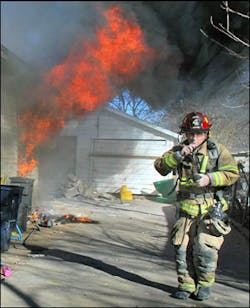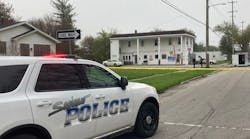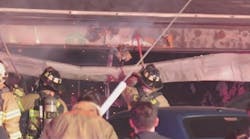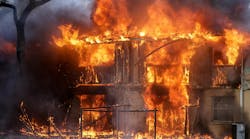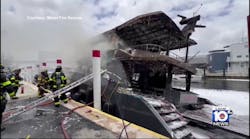The size-up for the engine company is a multi-layer task.
You are the officer of an engine company responding to a reported fire in a private dwelling and dispatch calls you on the radio and states "Dispatch to Engine 234, it sound like you are going to work. We have received a couple of calls..."
Your size-up should start everyday with the current weather conditions. Your fire size-up starts with receipt of alarm. As the officer you know the area and start to think about hose lines, water supply, access to the fire building. These are just a few of the size-up factors that should be considered at any fire or report of fire.
The engine company size-up will differ from that of the ladder company due to the required tasks on the fireground. The engine's main function should be to get water on to the fire. Their job is to put water on the fire and then we can go home. That is as basic as it gets but it is not that easy. because if it was, everyone would do it and we would not have fires to go to. Everyday in America numerous fire departments are fighting fires in structures. To make this a success we are going to need engine companies and their water.
Response Size-Up - The size-up for the engine company is a multi-layer task. The engine boss and the driver/apparatus operator must determine the best way to respond to the fire. They must take into account the driving conditions, the routes they are taking, the routes of other responding fire apparatus and chiefs, and the driving habits of the civilian public at large. That should scare anyone who holds that responsibility. They also have to take into to account responding police and emergency medical service vehicles. This is a difficult task to get to the scene safely in today's world. The most important factor in decisions made in the front seat should be the brother and sister firefighter riding on the apparatus.
Once at the scene, we determine that we have a working fire. The first thing done should be the initial report of conditions to dispatch and assumption of command if no chief officer is on the scene. The type of building, height, size-up and fire conditions must be transmitted over the radio to all incoming units. If a chief officer is on scene then report to command for instructions.
The engine company arrives on scene and transmits all of the necessary information to dispatch and the engine starts to initiate fire suppression. The officer is responsible to determine the size of the attack hose line. Once the officer makes the call for a specific hoseline, all members assigned to an engine company should be able to get the proper hoseline to the proper place to start our fire fight. While the line is being stretched the officer should try to do a complete 360-degree survey if possible. If that is not possible then at least three sides of the building should be observed.
Water Supply and Fire Attack Considerations
The next thing that the engine officer and all firefighters who are getting ready to make fire attack should consider is the water supply. Do we have a positive water supply? If we do not have a positive water source, then how much did we bring with us? Do we have enough to mount a serious fire attack? If not then we are going into the defensive mode until we have enough water? If we need a rural water shuttle and dump tanks then that information should be communicate to the dispatch and more resources call as necessary.
The next factor for the engine to consider is the type of building and how it was constructed. A new lightweight constructed building that has been burning for a long time might not allow for an aggressive interior fire attack. Is the building in the decay stages? Are we entering a building with a contents fire or are structural member involved? If the building is at risk then so are you and your crew.
The back-up hoseline is the next consideration. Is it on scene and in place? Is it still responding and you are alone for a while? These factors should influence how aggressive you are going to be with your crew. If there is no help then there is more risk. A good engine boss thinks about his firefighters as they make their decisions.
You should also consider the location of a truck company or suppression support firefighters. As you make a fire attack you want someone opposite the hoseline to ventilate. They will give you a place to channel the products of combustion and allow them to escape the fire building. If they do not escape the products of combustion and the steam they create when mixed with water, it will come right back to you and your crew. The crew will not be happy if the officer burns them.
After taking these critical steps we are now we are ready to begin fire suppression. Even though we have begun fire suppression we still must keep observing what is going on around us. We should never let your guard down until we have returned to the firehouse. Things can change and do at a fire and it only takes a minute. Always maintain your situational or team awareness and keep yourself and your team safe.
Learn from Captain Dugan Live: Captain Dugan will be teaching "Engine & Truck Company Operations: Overcoming Problems on the Fireground", a hands-on training session at Firehouse Expo in Baltimore in July 2008. Michael will also be teaching "Roof Operations in the Fire Service" and "Truck Company Operation: A 'Back to Basics' Review"
MICHAEL M. DUGAN, a Firehouse.com Contributing Editor, is the Captain of Ladder Company 123, Brooklyn, NY and has over 30 years in the fire service. He is the lead instructor for "Engine and Truck Company Hands-on Training programs at Firehouse Expo and Firehouse World and serves as an instructor at the FDNY's Annual Education Day, where he developed some of their programs. You can reach Michael by e-mail at [email protected] or his website: www.NYFiretraining.com.
